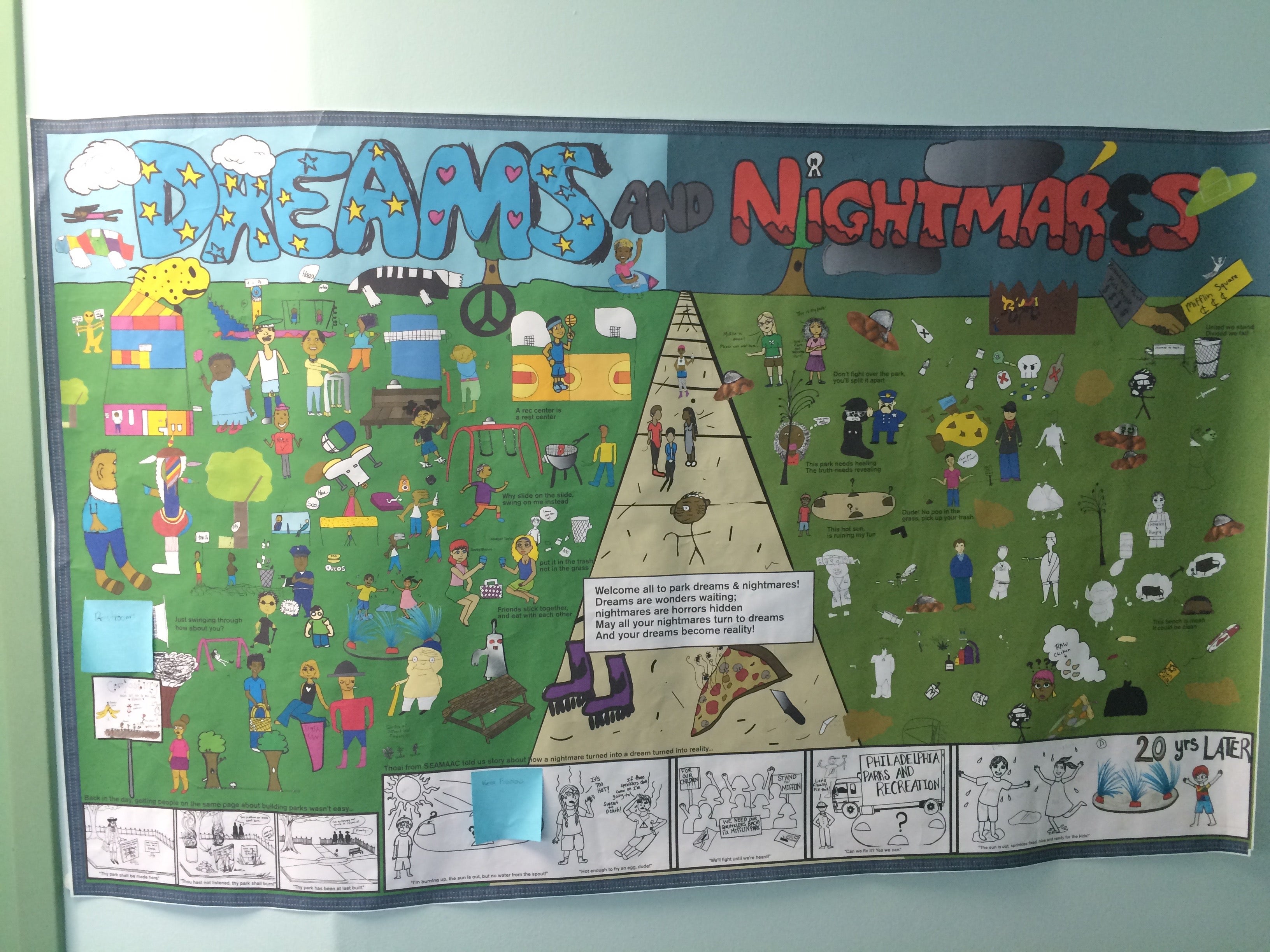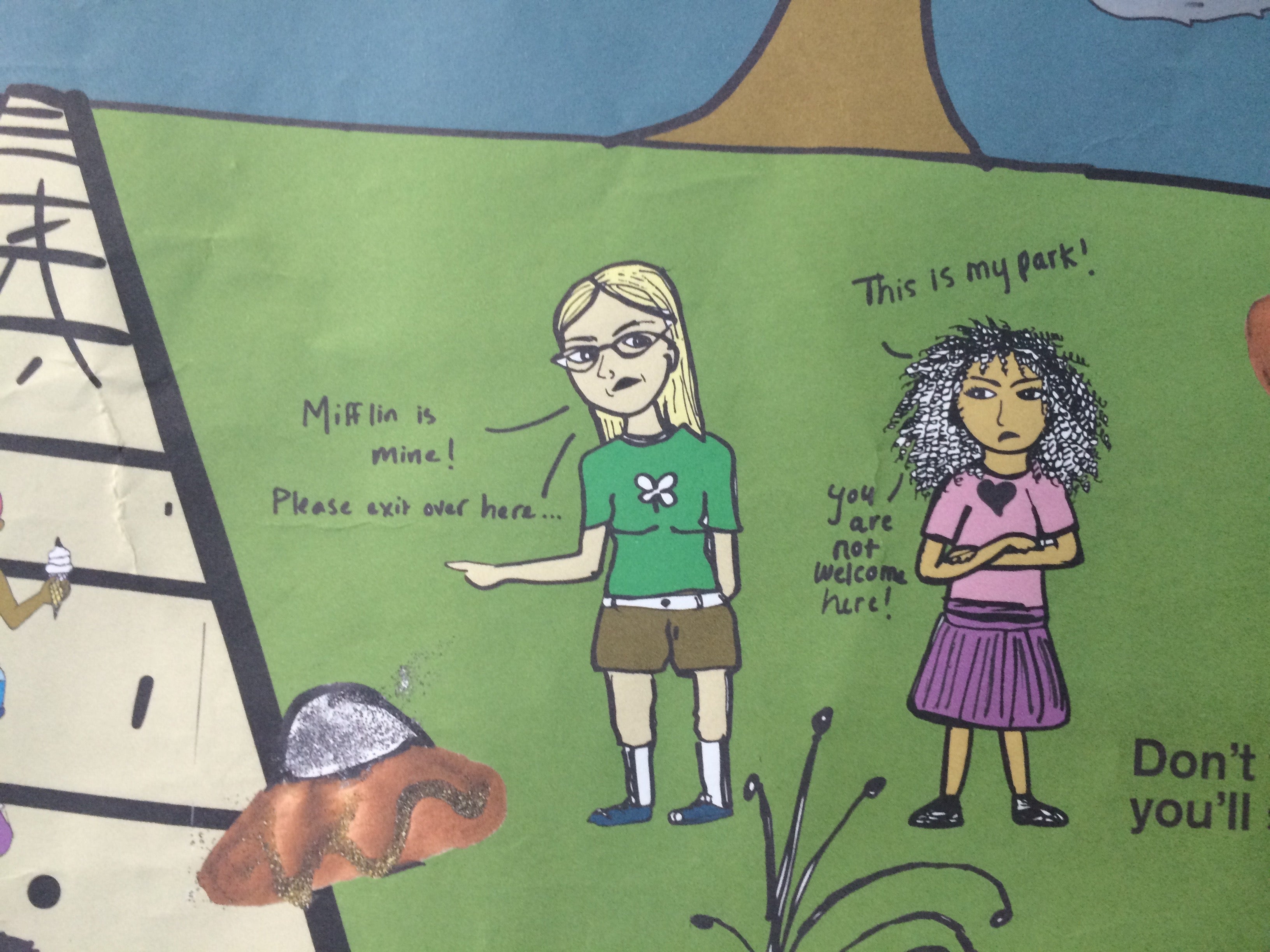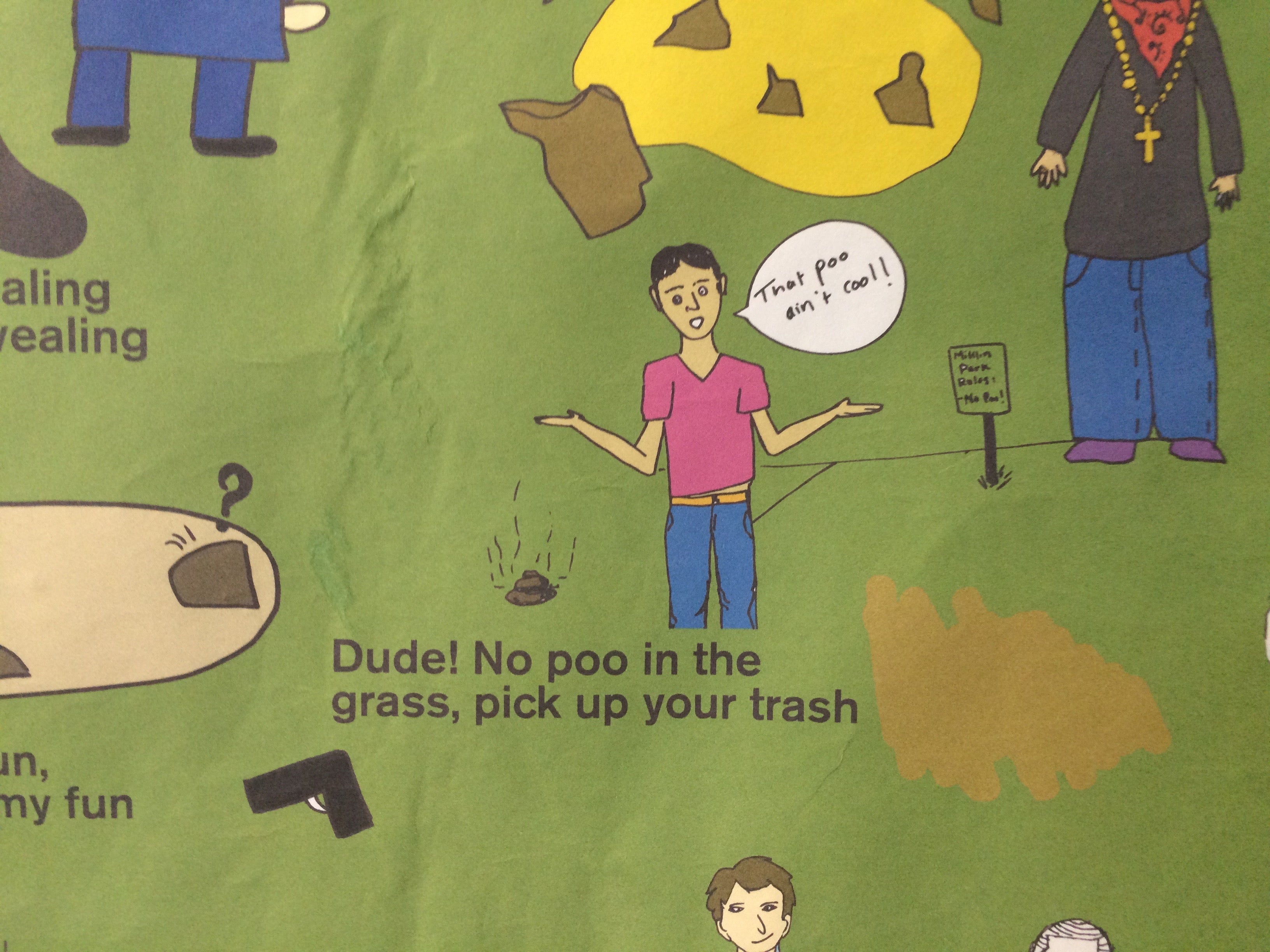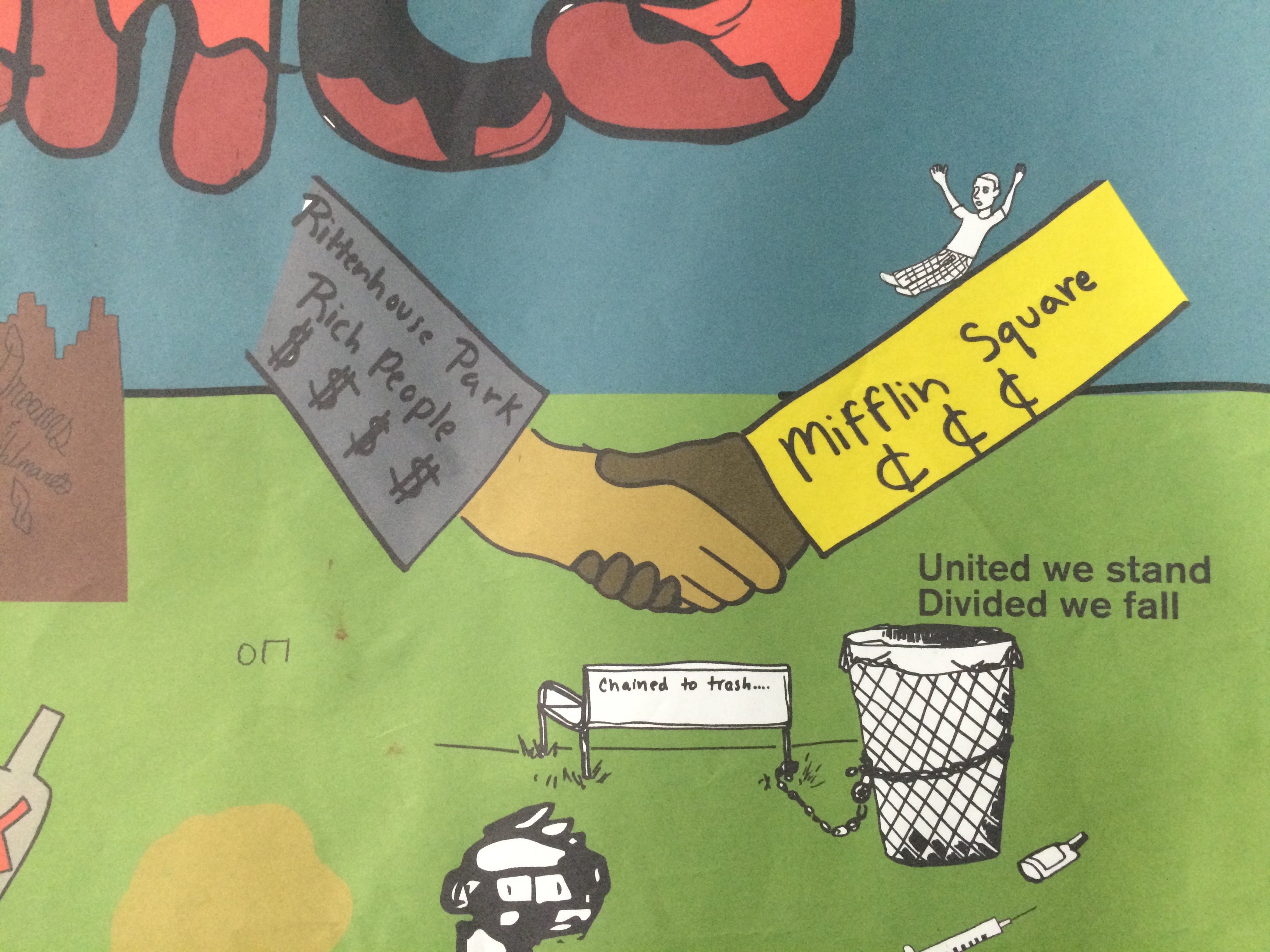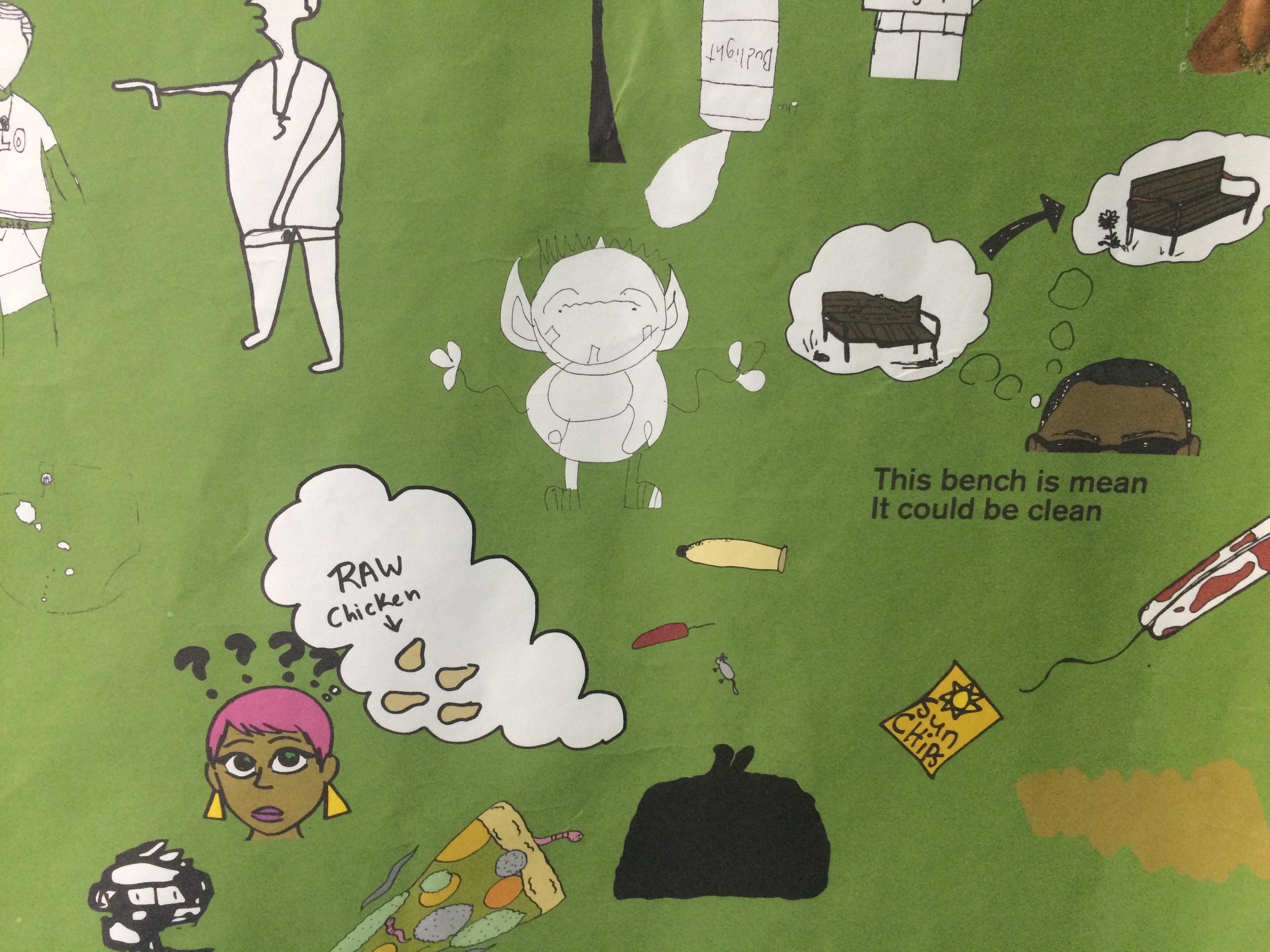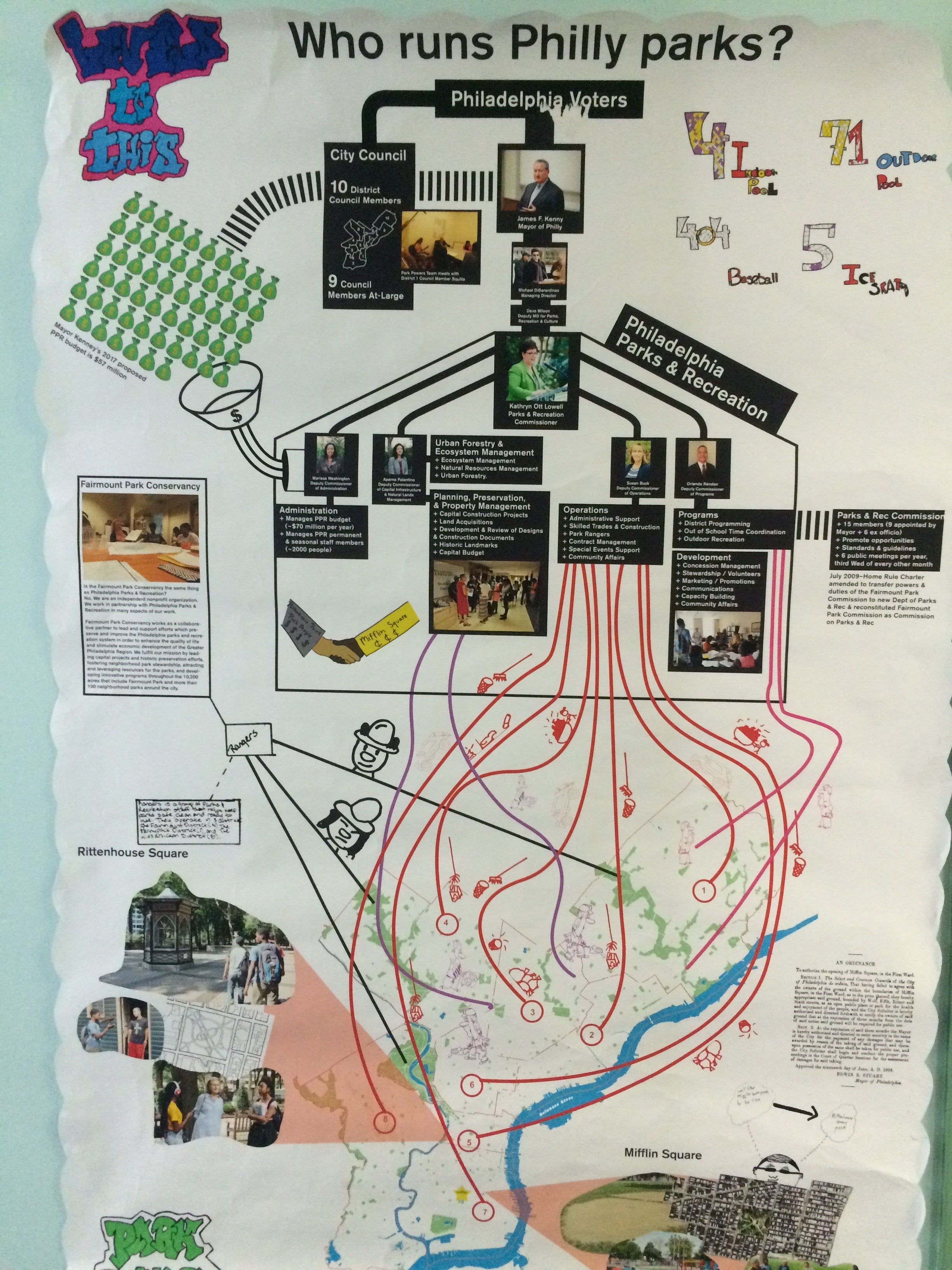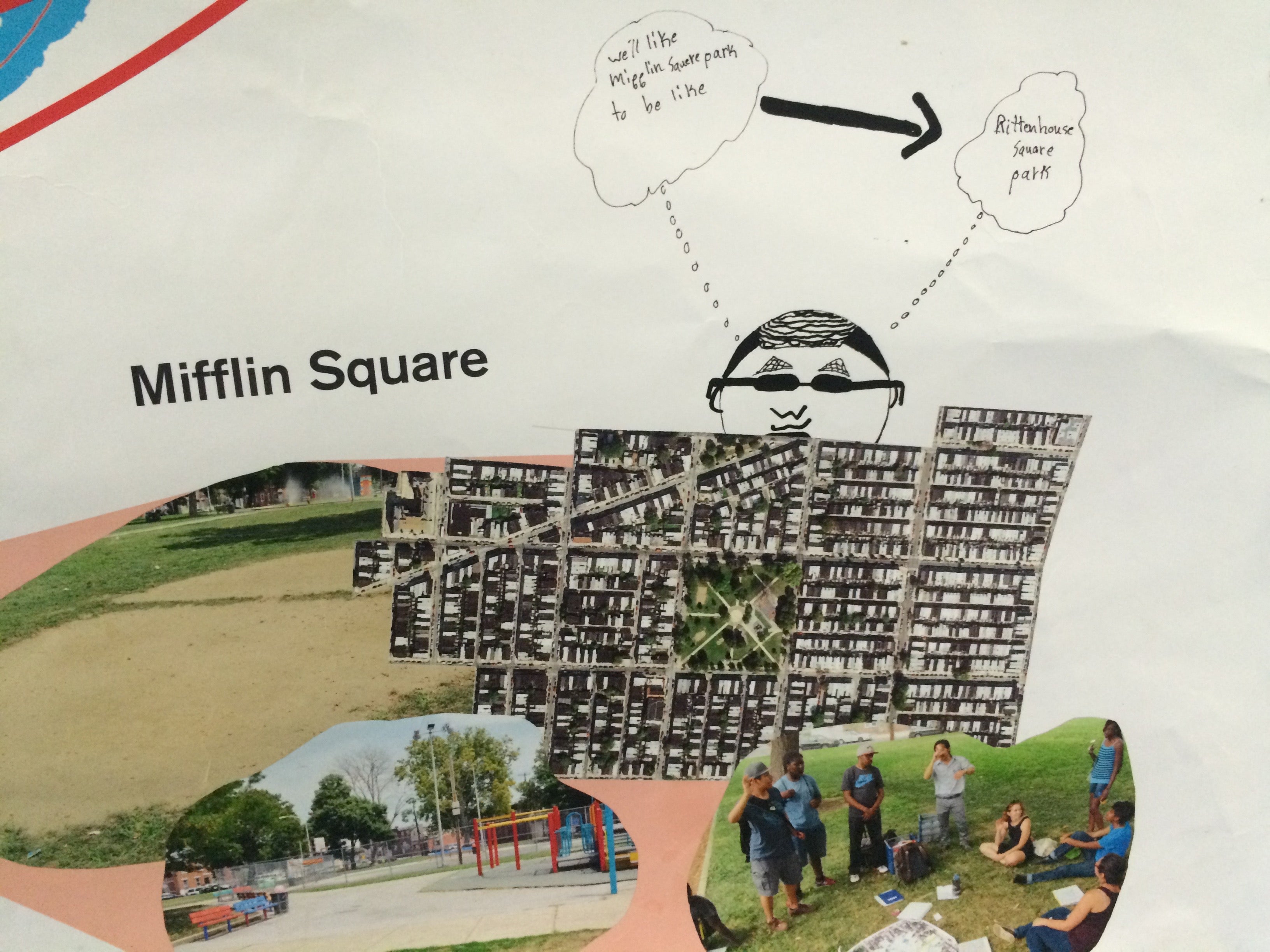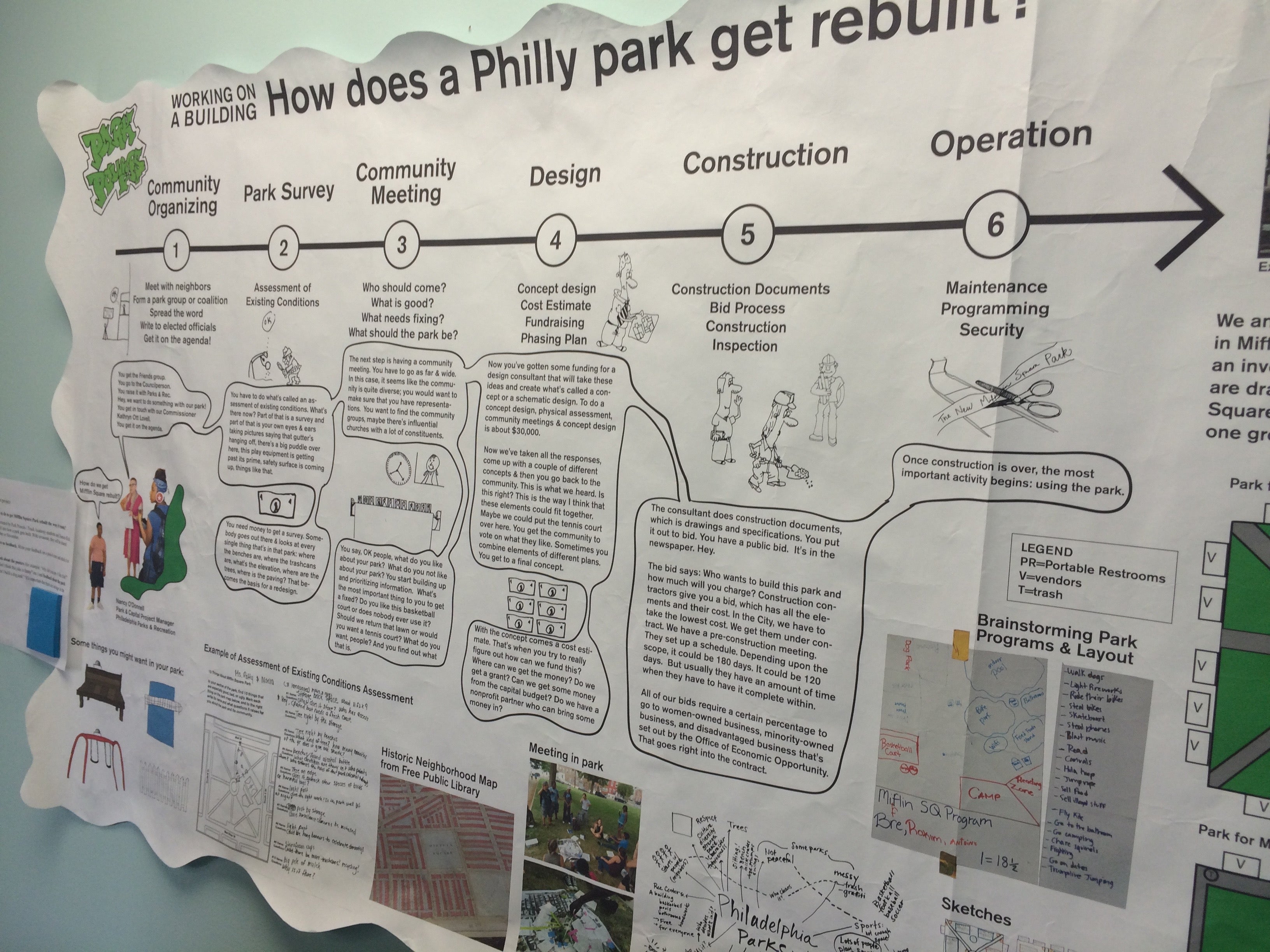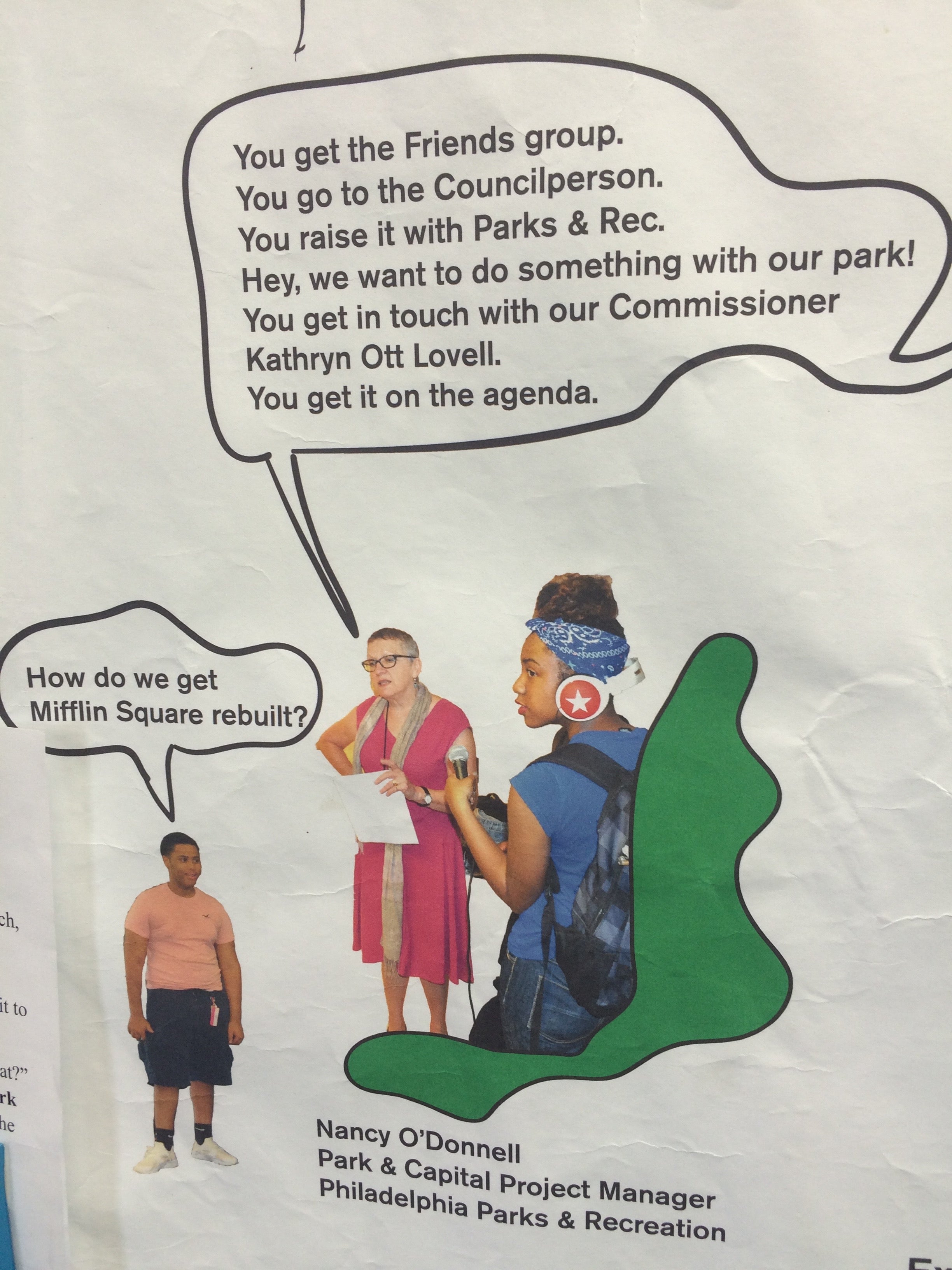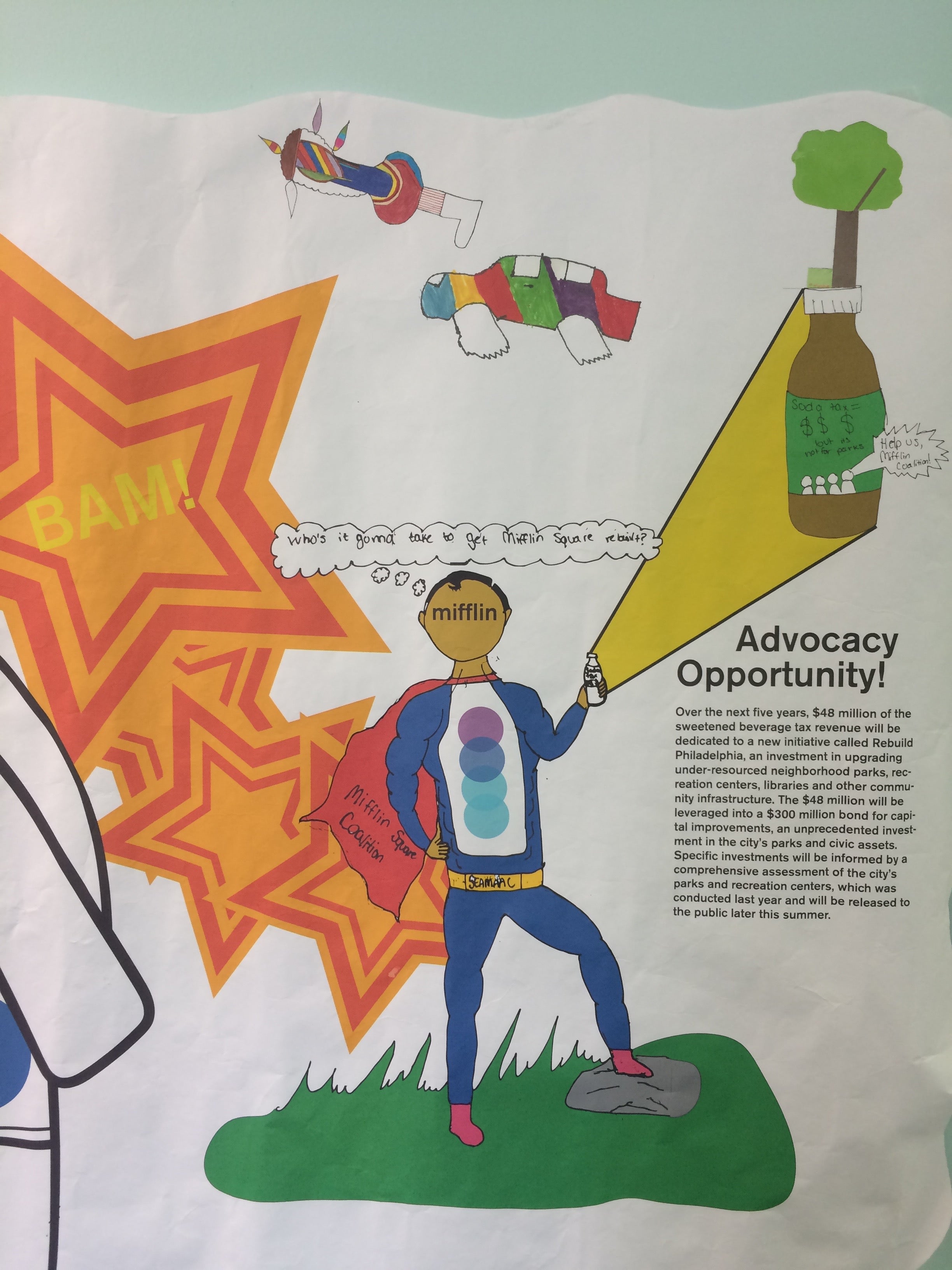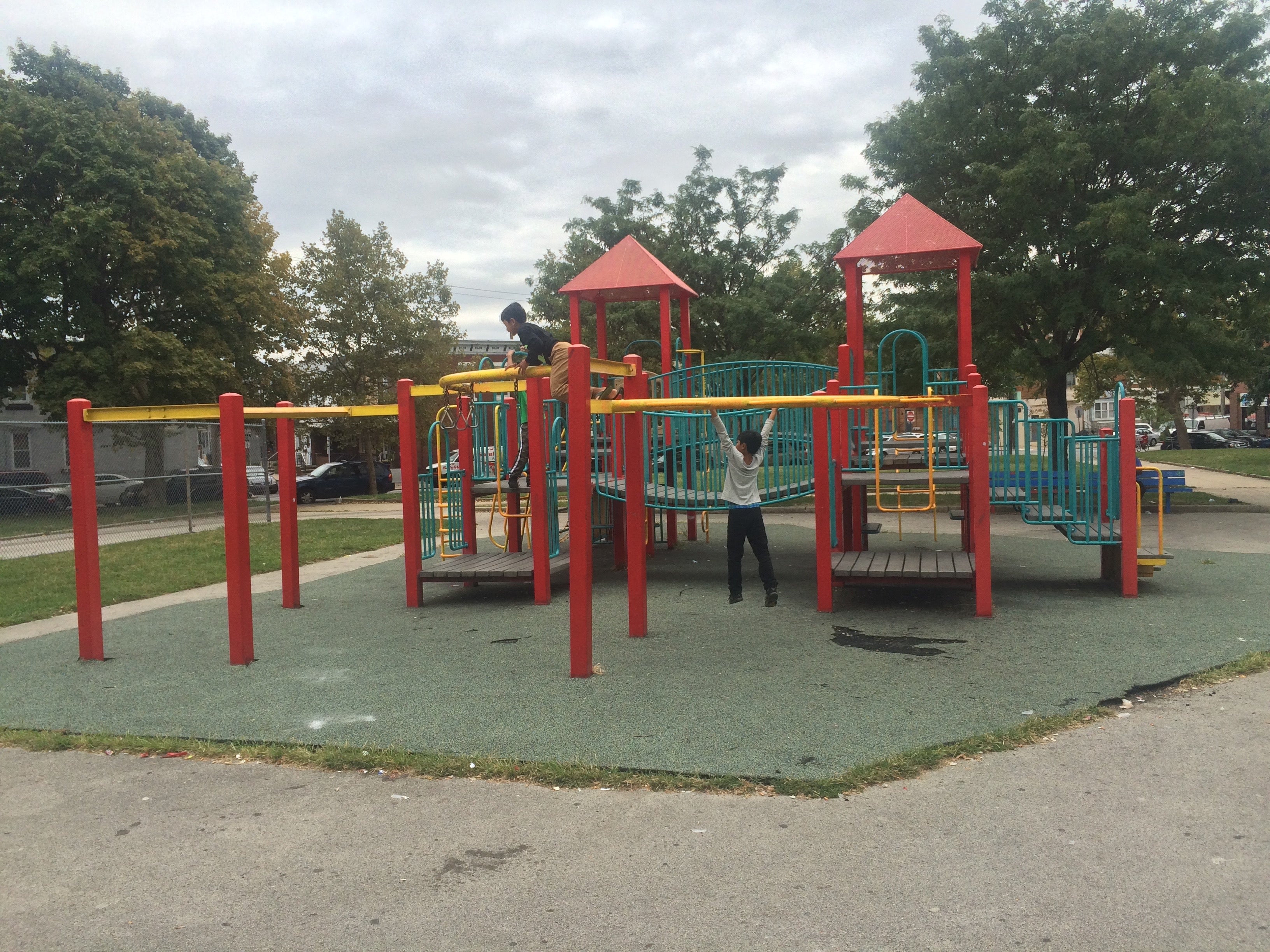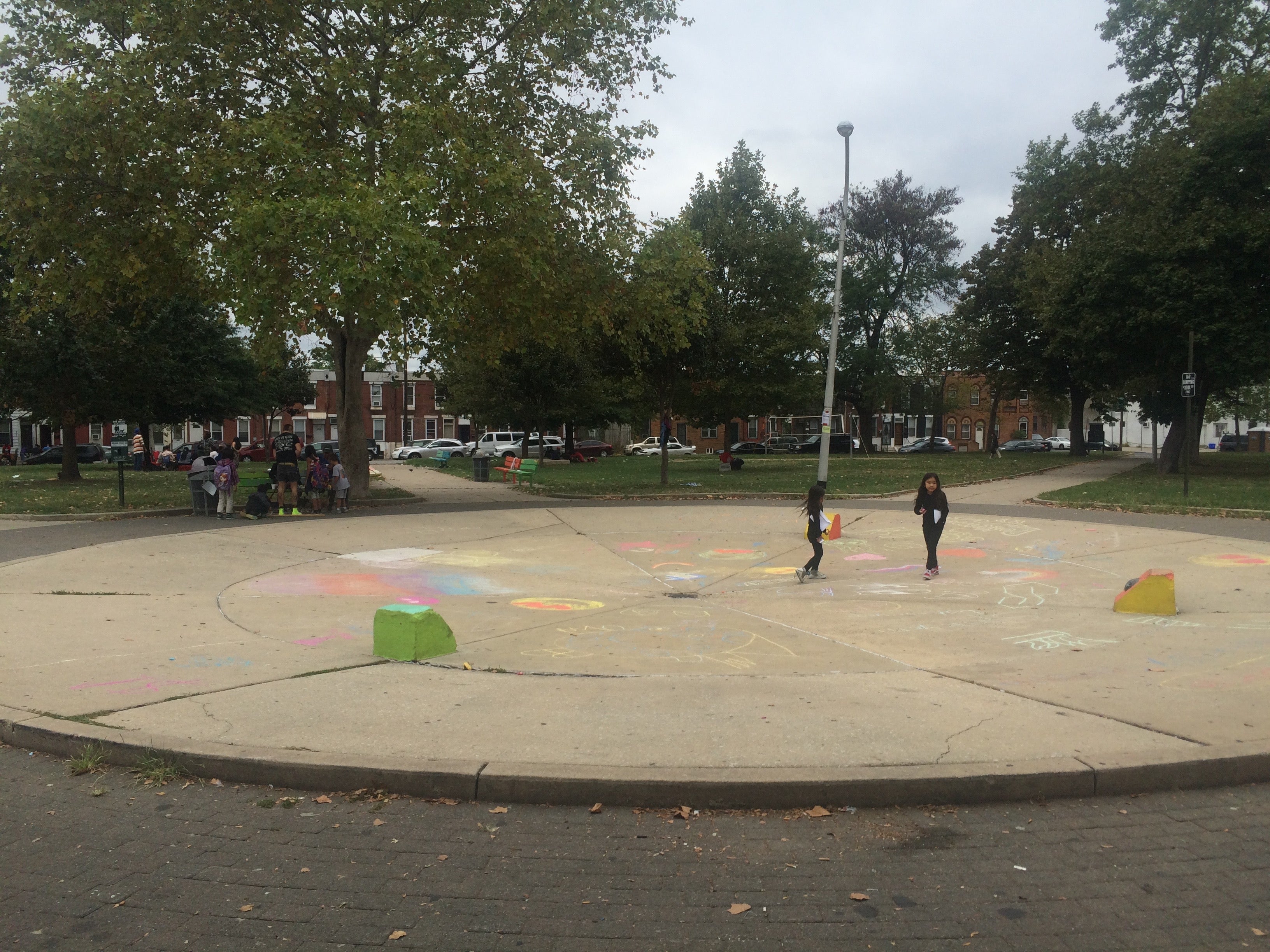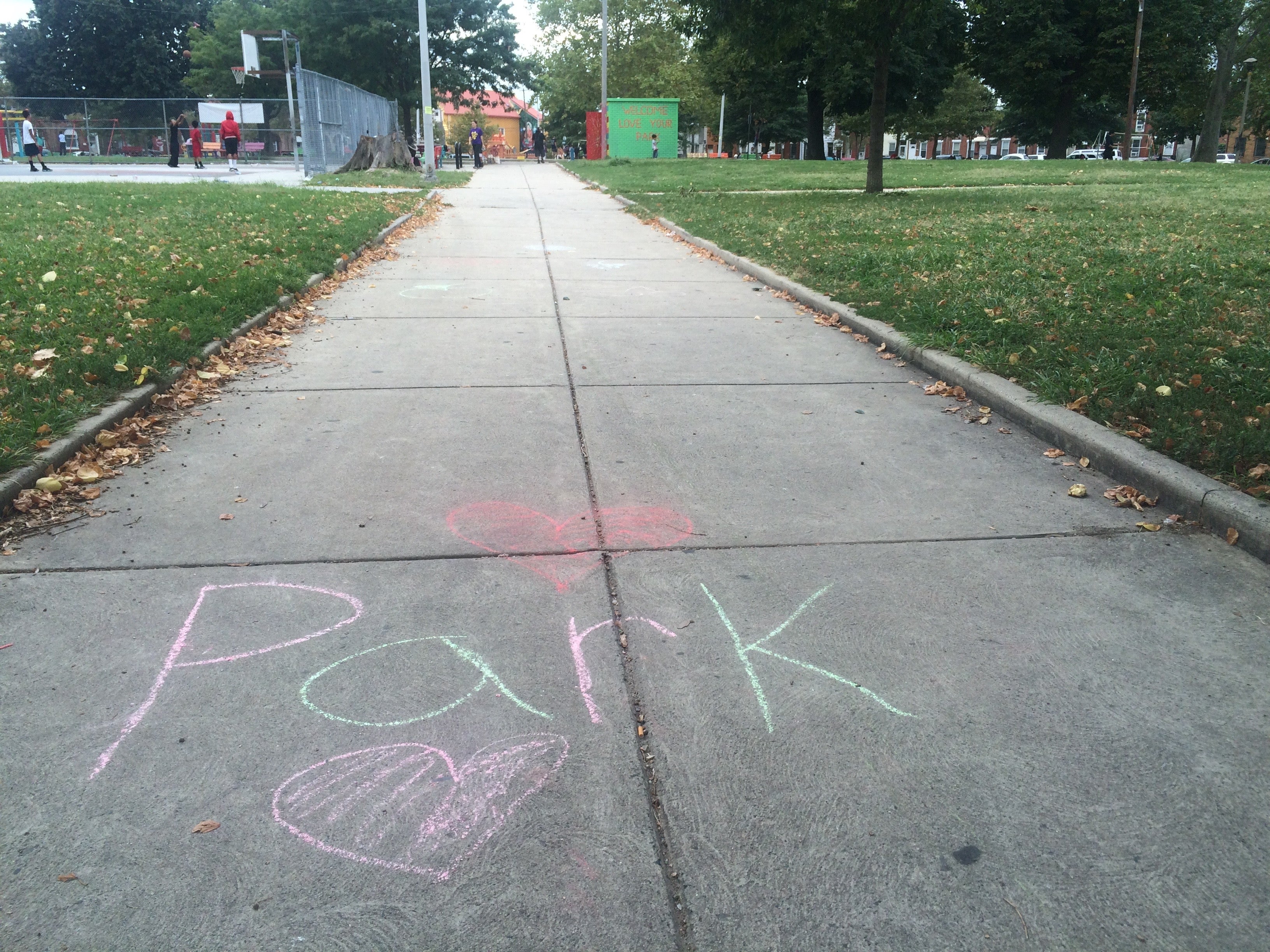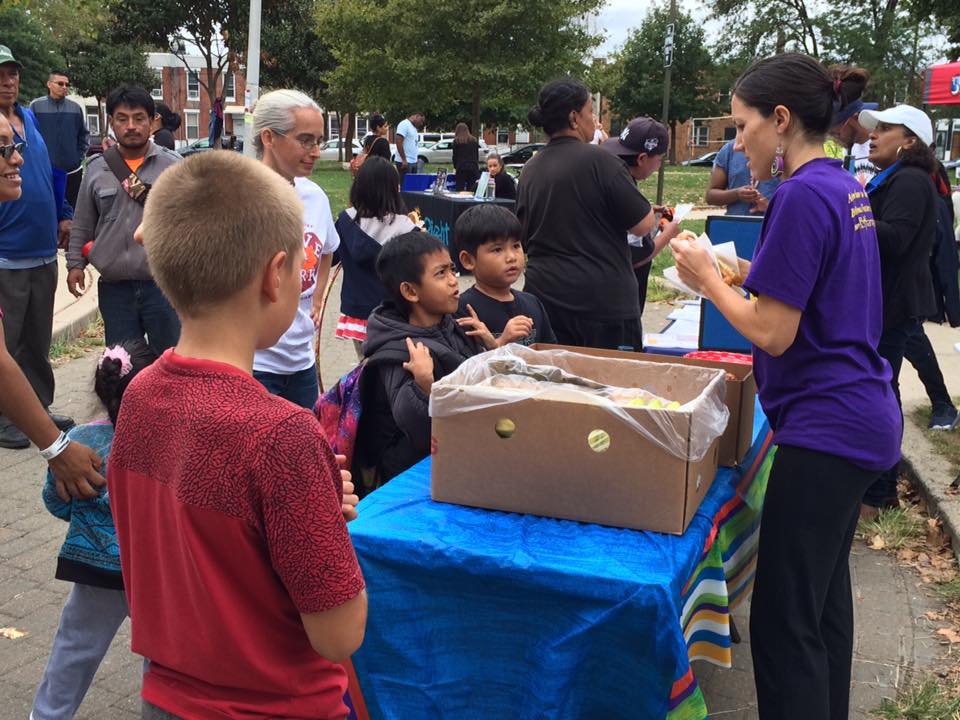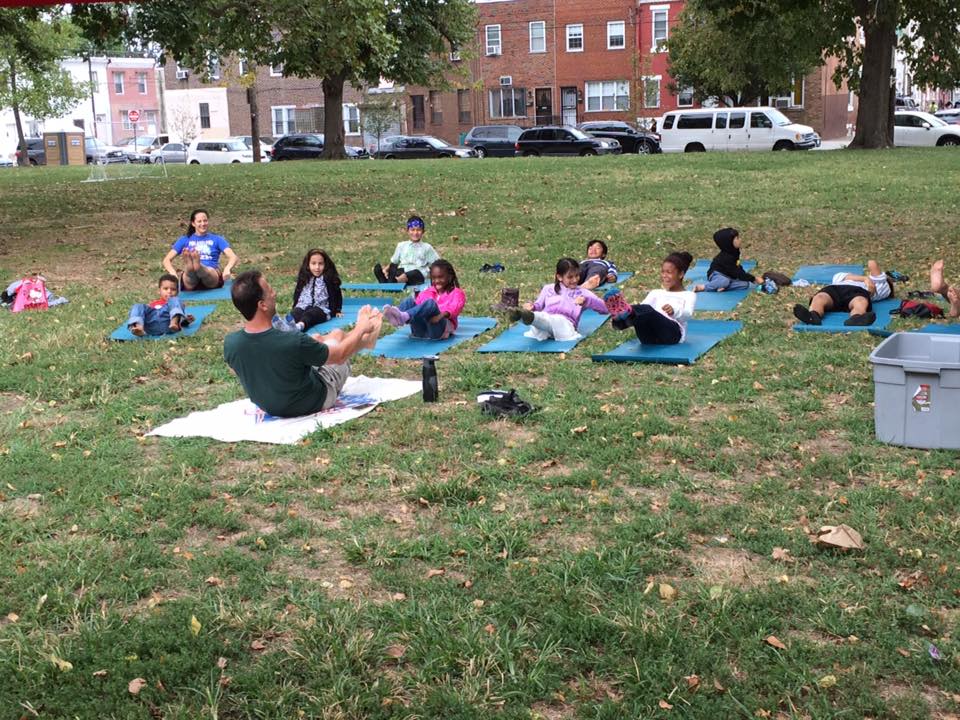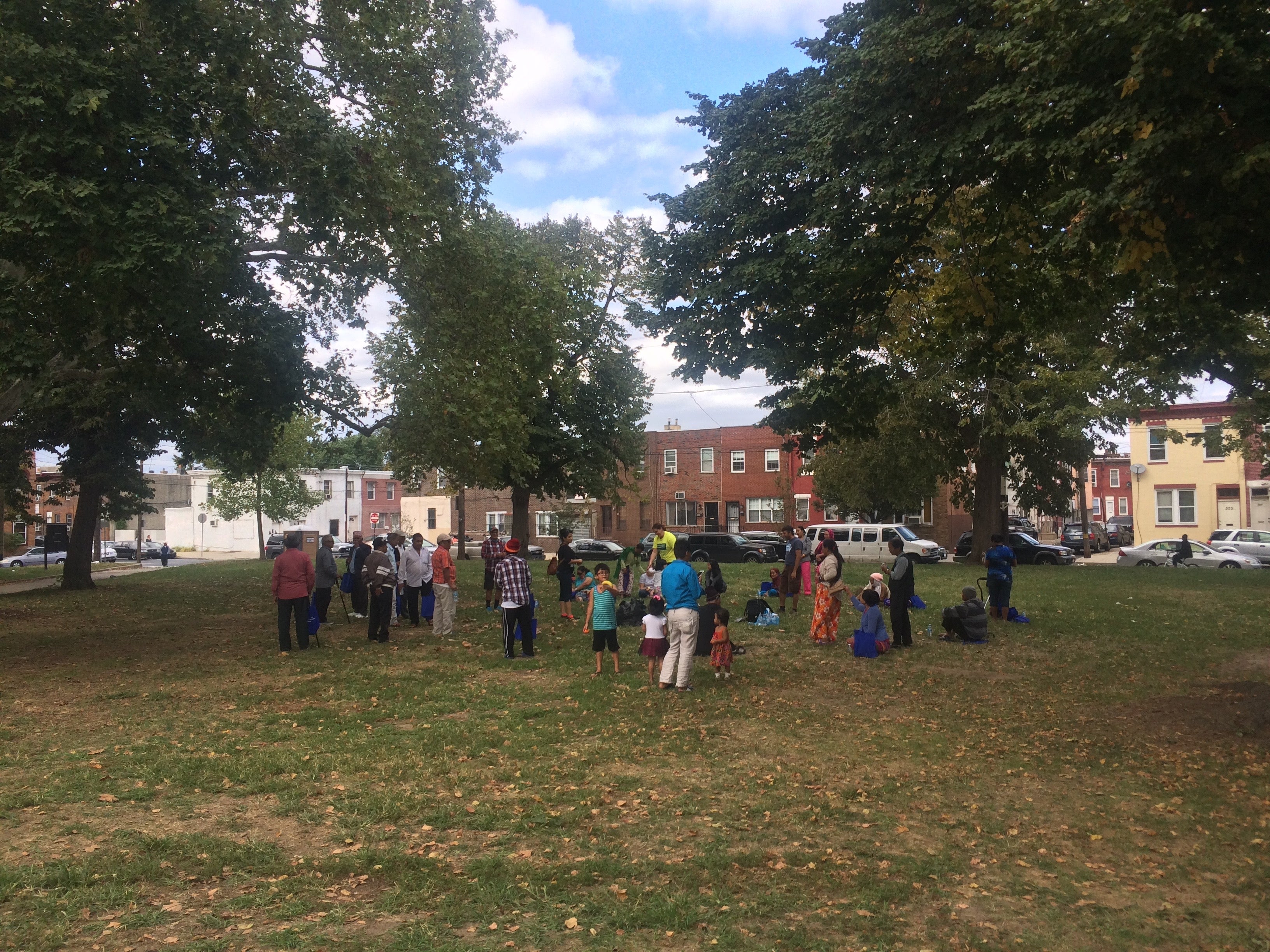Reimagining Mifflin Square Park in 21 languages
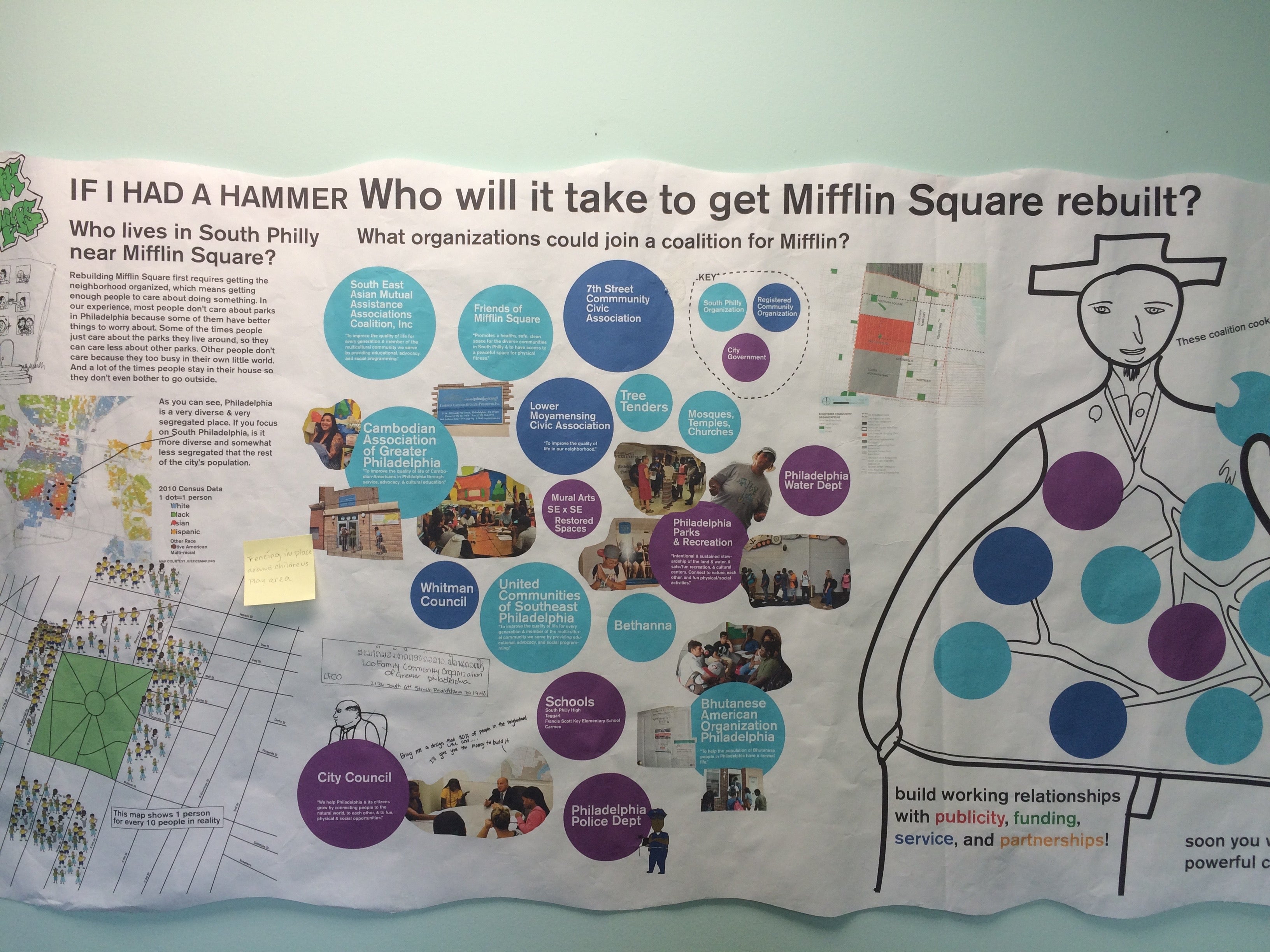
In Thoai Nguyen‘s dreams, Mifflin Square Park, a vibrant but tired park in Southeast Philadelphia, has a turf field for kids to play soccer, a rebuilt basketball court, new playground equipment with a space for toddlers, a garden with flowers and herbs, benches and tables for senior citizens and family picnics, a corridor of pop-up restaurants, better lighting, no trash and, very importantly, no dog crap on the grass.
Nguyen, 51, is one of the many residents who have been working hard, for the last ten years, to reclaim the park from contested turf among gangs into the epicenter of culture that it is today. Mifflin Square is located between 5th and 6th streets from Wolf to Ritner. It draws people from the surrounding neighborhoods who speak more than 21 languages, including families of Southeast Asian refugees, Latino and African immigrants, and long-time black and white residents who don’t have a lot of other options for green space in this part of South Philadelphia.
He’s also the executive director of SEAMAAC, the Southeast Asian Mutual Assistance Associations Coalition. This June, SEAMAAC received a $500,000 grant from the William Penn Foundation “toward a community organizing effort and community-led plan for Mifflin Square Park and ‘early action’ projects and programming,” a chance for Nguyen and Mifflin Square neighbors to put their dreams onto paper.
“We want to have a gate, an entrance way, that’s colorful and beautiful and that says this is Mifflin Square Park and this is a park for all of us,” Nguyen said.
He’s not dreaming alone. The reinvention of Mifflin Square Park has been a collective project that involves more than 17 organizations in the neighborhood, including Friends of Mifflin Square Park, Bhutanese American Organization of Philadelphia, the Cambodian Association of Greater Philadelphia, the Seventh Street Community Civic Association, United Communities Southeast Philadelphia, Bethanna, Lower Moyamensing Civic Association (LoMo) and Mural Arts Philadelphia. Earlier this year, SEAMAAC conducted focus groups to identify some of the community’s wants and needs. And last week, the stakeholders chose a design firm to put those into a plan.
“At the end of 18 months, we will have a practical and compelling vision for what Mifflin Square Park could be,” Nguyen told PlanPhilly. “Our mission now is to engage all these communities. Everyone is going to come to the table with different visions and agendas, and our job is to find a common ground.”
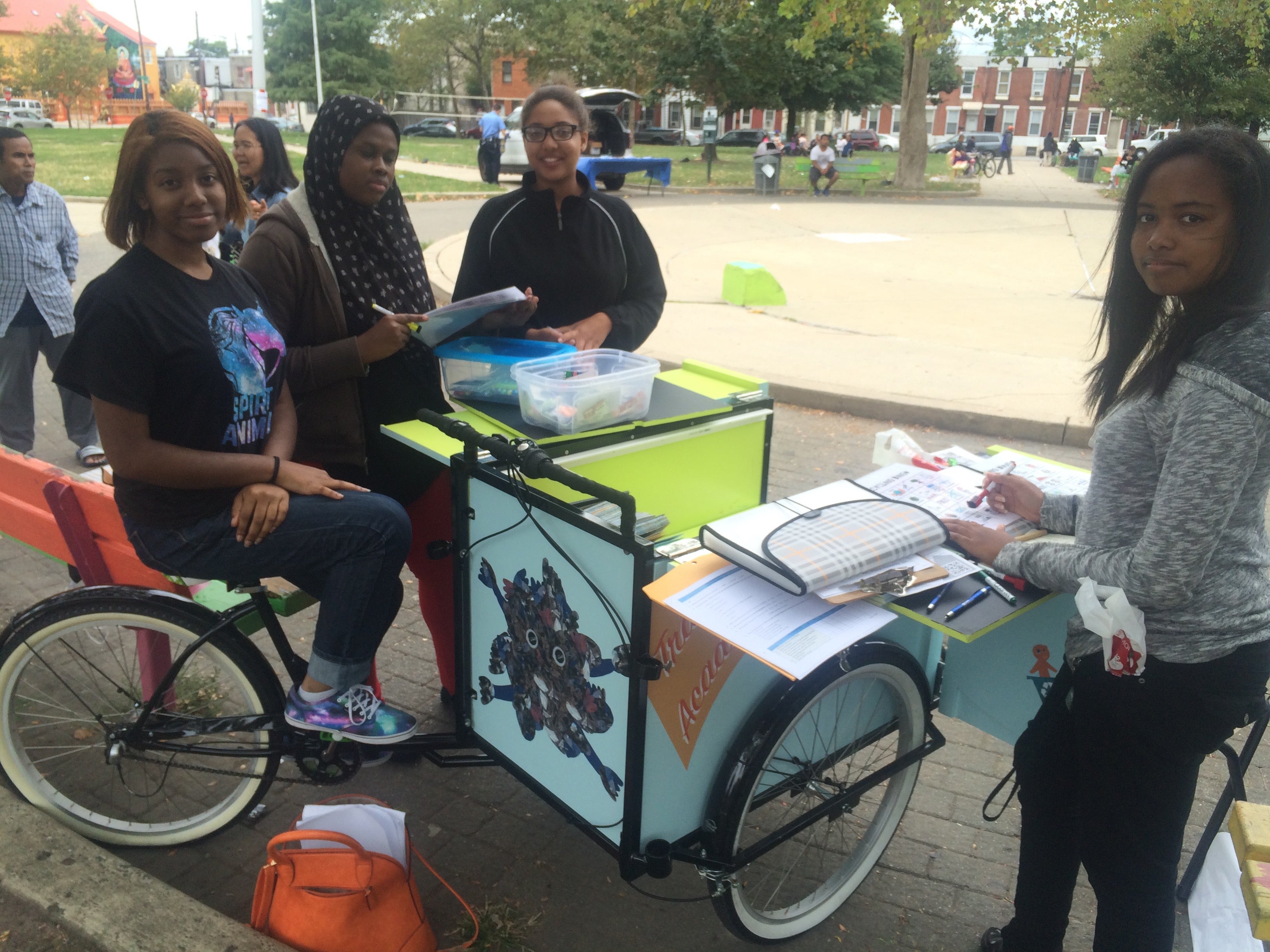
Trash and security have been big issues for the community for years. Brooke Allen, 40, has been part of Friends of Mifflin Square Park for 8 years, and says when she first came there was so much litter at the park that few people were really using it. Now, the group organizes cleanups, activities for children, and yoga classes that gather around 20 people every Saturday morning. Still, she says, some people are reticent to come to the park.
“They are afraid,” she said, “because the picture is that it’s unclean. People are still thinking of when there were gangs ten years ago, or longer. And drug use still happens in the park, not as frequently as it used to, and there was a fatal shooting last year at the periphery of the park.”
But Allen wishes those people saw the park on days like Saturday, September 24th, when more than 100 people were playing and cleaning the park during a health fair hosted by Friends of Mifflin Square Park.
“To come to the park on a day like this, or to any of the events that we have, is really eye-opening because you wouldn’t get the sense being here that this is an unsafe place,” she said.
The mix of ethnicities has also been challenging when it comes to shifting perceptions about the park. Darlene Olsen, a member of the environmental committee at LoMo and Friends of Mifflin Square Park, has been working with Mural Arts on projects in the park such as the Trash Academy and the Trashmobile, who connected local youth, artists, business owners and environmental activists to create solutions to the trash problem in Southeast Philadelphia.
“Before I got involved with them, I was kind of afraid to walk three blocks east because, well, no one looked like me and, [I thought] am I safe over here,” Olsen, who is white, told PlanPhilly. “Now I feel that this is a wonderful diverse community.”
This summer, Mural Arts worked with urban planner and artist Damon Rich on Park Powers, a project that employed 15 local teenagers to explore what it would take to get Mifflin Square Park the way the diverse neighborhood wants it to be. To share the results of their research they created posters explaining the answer to questions like, “Who runs Philly Parks?”, showing how Mayor Kenney’s 2017 $57 million budget flows to Parks and Recreation. In the lower left corner of the poster there are pictures of the kids interviewing people at Rittenhouse Square and in the lower right pictures of Mifflin Square Park with the drawing of a face saying, “We’ll like Mifflin Square Park to be like… Rittenhouse Square Park”. Another panel divides the park into “Dreams,” where everyone is nice to each other and the park is clean, “and Nightmares,” where the scene is pretty much the opposite. And under “How does a Philly park get rebuilt?”, the poster explains six steps –community organizing, park survey, community meeting, design, construction, and operation.
Rich, who’s the founder of the Center for Urban Pedagogy, a New York-based nonprofit that uses design and art to improve civic engagement, and a former planning director and chief urban designer for the Newark, New Jersey, was also chosen by SEAMAAC and other stakeholders to redesign the park with his urban design, planning, and civic arts studio Hector.
“He’s a very sophisticated and knowledgeable person,” Shari Hersh, senior project manager and founder of Restored Spaces, the project at Mural Arts that Park Powers is part of, told PlanPhilly. “He’s building democracy while building a park.”
“As a Friends Group, we face the challenges of language barriers and really trying to understand the wants and needs of community members who have come to Mifflin Square Park from all around the world. With Hector’s background in community-led public space revitalization initiatives and the long-time efforts of SEAMAAC and Mural Arts in the community surrounding Mifflin Square Park, we feel like we’re in a good position to get as many community members as possible mobilized and engaged in helping to determine how Mifflin Square Park evolves going forward,” Matt Migliore, from Friends of Mifflin Square Park, said over email.
From now until December, the design firm will hold more focus groups and work on design concepts to show the community around January. SEAMAAC wants the neighbors to be able to comment and edit those designs and see some early action projects, like a more attractive lighting, rolling out by May. Fortunately, there are a few things most people agree on. One of them is the need for new infrastructure, especially playground equipment.
“This is a very well used vibrant park that shows the diversity of South Philadelphia, but a park that hasn’t has an investment from the City and could use some resources,” said Karisa Barlow, 27, a member of the Friends group who works for Bethanna, a community agency that focuses on South Philadelphia and supports lots of kids’ activities in the park. “The swing set is damaged, the lights are out, the benches have missing boards. There’s lot of people to come play different sports, but we don’t have good playing surfaces. A there’s a need for more trash and recycling bins.”
“More sitting areas, maybe some sitting areas around the volleyball courts,” adds Rebecca Wanner, a member from LoMo and the Friends group. “And a self service push button for the water sprinkler” to cool off in summer.
There also seems to be broad agreement with adding a community garden, and more trees and flowers all around the park.
“This is the only piece of land which is open and has some trees in this part of the city, and we have a fairly large sized community living by the park,” Leela Kuikel, from the Bhutanese American Organization Philadelphia told PlanPhilly.
According to SEAMAAC, Southeast Philadelphia has the highest density of Southeast Asians in Philadelphia, and many of them come from rural communities where farming was their main activity. Many refugees use the community gardens on Emily and Mercy streets, but there’s need for more.
“Growing and getting involved with the garden is very, very important for the community,” said Kuikel. “The time they spend in the garden is the most cherished… to take care of the depression and loneliness, and all that they have to face having come to a different country, in the city environment, and not knowing language.”
One park issue without a clear answer yet is the question of what will become of the park’s food vendors. Until last year, the park was well known, inside and outside of the neighborhood, for its cheap and authentic Southeast Asian street food. Every weekend, a group of 20 to 25 food street vendors would set up shop in the park, installing charcoal grills to cook lemongrass chicken wings and slices of beef. Ladies from Cambodia, Laos, Burma and Nepal complemented each other’s offerings making fresh papaya salads on the spot, portions of sticky rice and different kinds of sweets. But last autumn, the Philadelphia Police Department shut them down for not having licenses, in the wake of an outbreak of violence adjacent to the park.
Most of the organizations involved in the plan agree that the food vendors were important to the park, but that they need regulation.
“I think it [the vendor shut down] changed the way a lot of people used the park,” said Wanner, from LoMo. “It used to be a place that people would come and stay for good portions of the day with their family. So now, there are still a lot of people that use the park, and it’s very busy at night, but it doesn’t have that same sense of place that it had then.”
Nguyen thinks there’s more than a 50 percent decline in the usage of the park since the vendors were shut down, and although the park is cleaner without them, he doesn’t think it’s safer. “The park is seen as unsafe by a lot of families, but when you have a lot of people and families making picnics and hanging out there, you’re more likely to go,” he said.
SEAMAAC is looking for vendors who are willing to go through the process of getting their licenses, getting training and identifying a commissary kitchen where they can prepare food, and the organization ready to help them with small business loans. And although they know it will be hard, Nguyen wants to bring vending back by early next spring and is confident that by the end of next year, there will be five legal vendors selling in the park. Their vision is to line up one side of the park with shipping containers with open windows, running faucets and lights transformed into pop-up street restaurants.
“We think we can make more business for them if they were able to formalize their business and we market it as a food destination,” Nguyen said.
The inclusive, coalition-building approach taken by SEAMAAC and the other organizations in the table for this planning process will make everything slower. But according to Hersh, from Mural Arts, most of the actors involved in the process think that’s what the neighborhood needs “in order to reconnect to each other and to break down old suspicions and conflicts.”
“Yes,” added Olsen, “because when the City asks them, for example, why do you think there’s so much trash here, they always blame another ethnic group.”
“It’s going to take years,” said Allen, from Friends of Mifflin Square Park. “But that’s not a bad thing. Ultimately we need to make sure that whatever changes are in the park are truly what the community wants, and not what we think they want.”
“We are really excited,” said Wanner, from LoMo. “It’s complicated, but it’s also a really good opportunity to bring people together.”
First District Councilman Mark Squilla promised the group that if 80% of people agree to the plan, he would fund it.
“We’re going to fund this no matter what,” Squilla told PlanPhilly. “This is going to get done. The only reason why I say that, and not maybe if or when, it’s because of the Rebuild Program. The city now, from the Sugar Tax, would be able to borrow money up to $500 million dollars that the council members get to pick where to spend in their districts. And this is going to be one of those locations where we spend the money.”
Squilla, who grew up in this area of South Philly, says one reason why Rittenhouse Square has more resources is because they have community involvement.
“So when they say, what can we do to get that same kind of resources? Easy, get involved in the process,” he said. “Is not like the squeaky wheel gets the oil, but it’s the people who have the most concerns and are more invested in it, get more attention. And that’s what’s happening here.”
WHYY is your source for fact-based, in-depth journalism and information. As a nonprofit organization, we rely on financial support from readers like you. Please give today.



